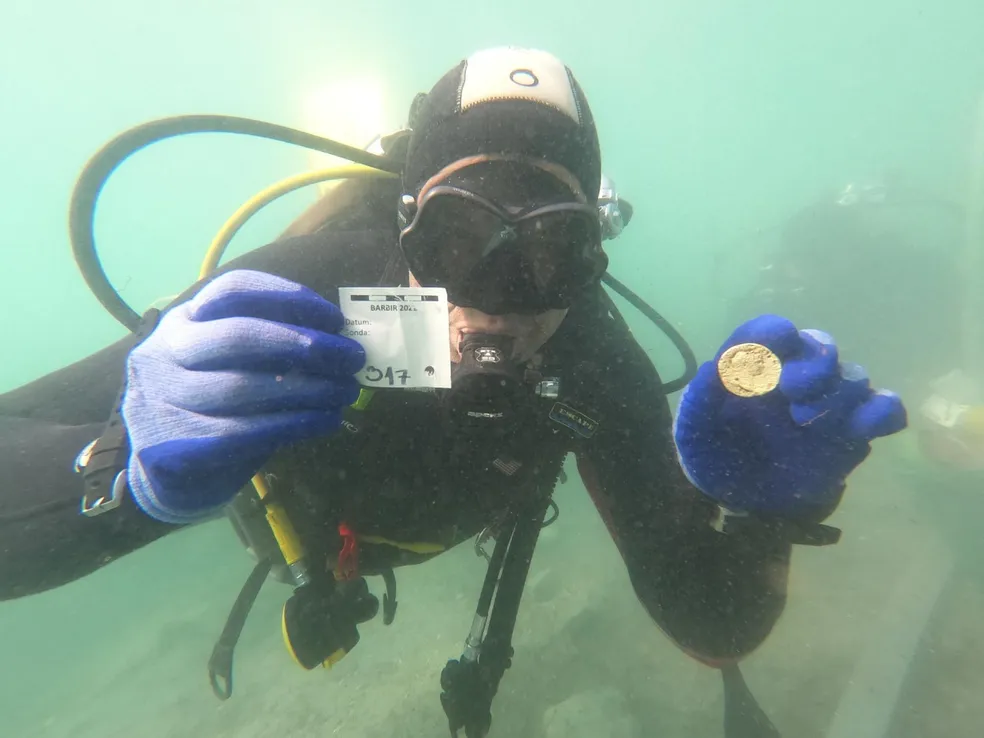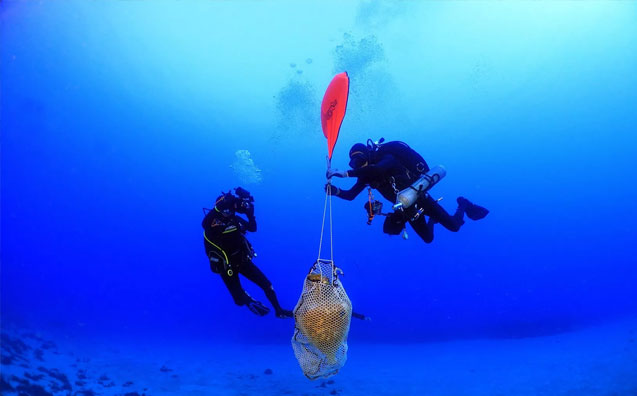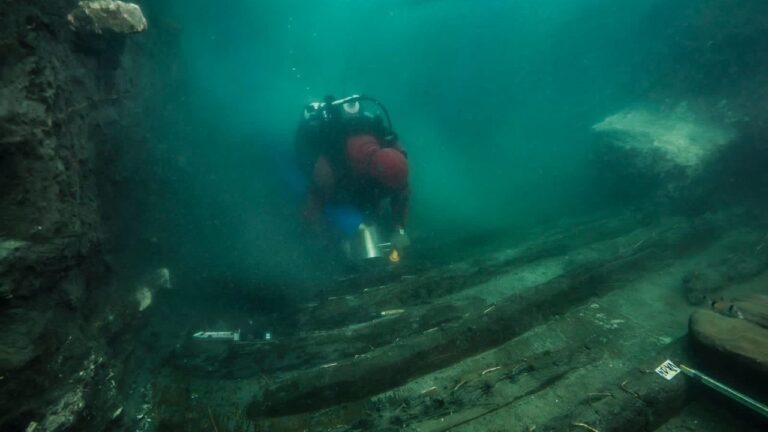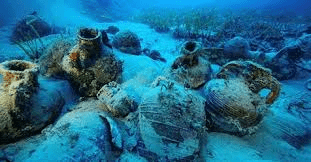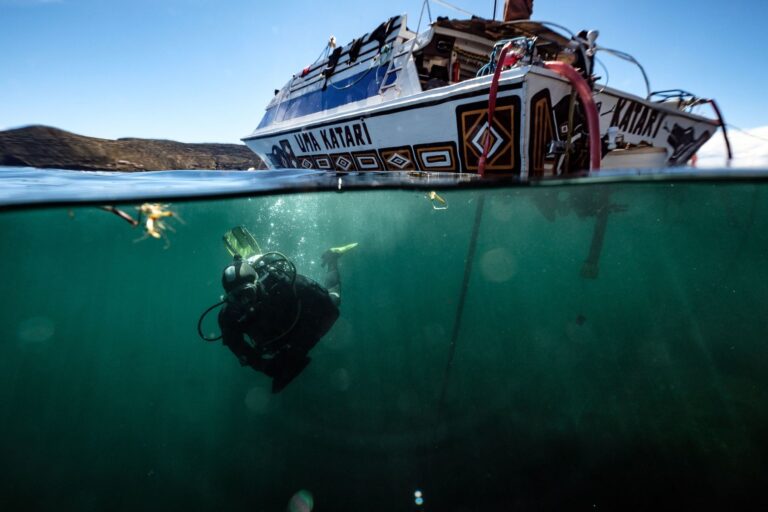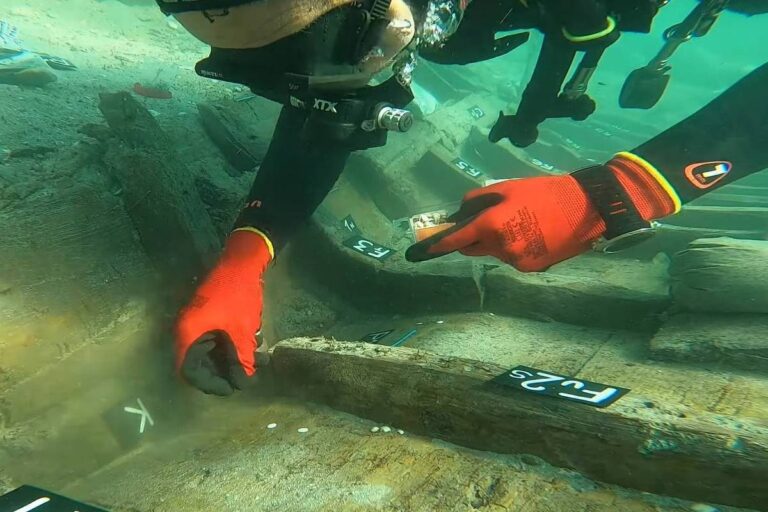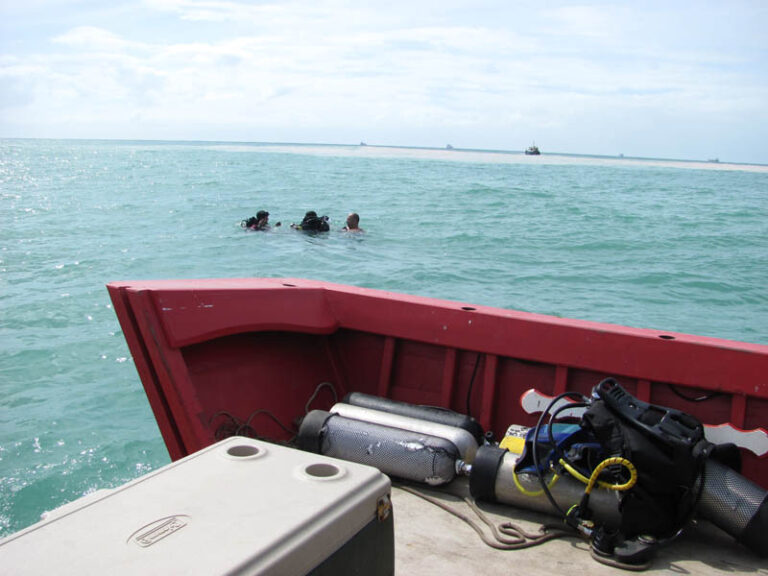Underwater Robotics in Archaeology: Exploring Unreachable Depths
Underwater archaeology plays a crucial role in uncovering the hidden treasures of our past, but it is not without its challenges. The depths of oceans, lakes, and rivers have always been an intriguing enigma, holding invaluable historical and cultural artifacts that can reshape our understanding of ancient civilizations. However, traditional diving methods have limited our exploration capabilities, especially in unreachable depths. This is where the concept of underwater robotics comes into play.
Underwater robotics offers a revolutionary solution to the limitations of conventional archaeological exploration. By utilizing remotely operated vehicles (ROVs) and autonomous underwater vehicles (AUVs), archaeologists can now reach depths previously deemed inaccessible. These sophisticated machines have drastically transformed the field of underwater archaeology, allowing researchers to navigate and investigate uncharted territories with increased efficiency, accuracy, and safety.
This article will delve into the significance of underwater archaeology, highlighting the valuable insights it has provided and the challenges faced by traditional diving methods. It will then introduce the concept of underwater robotics, discussing how ROVs and AUVs function and the advantages they bring to archaeological exploration. Additionally, case studies will be examined to showcase the remarkable discoveries made possible by underwater robots.
Next, the article will explore the cutting-edge technologies embedded in underwater robotics that enhance their capabilities. Advanced imaging sensors, sonar systems, and manipulator arms have revolutionized the ability of these machines to map, photograph, and retrieve artifacts from the depths, contributing immensely to our understanding of past civilizations. Ongoing research and development, including the integration of artificial intelligence and machine learning, will also be discussed, illustrating the continuous improvements in underwater robotics technology.
However, as with any technological advancement, underwater robotics also faces its own set of challenges. These obstacles, such as limited battery life, communication issues, and delicate navigation in complex underwater terrains, will be addressed. The need for consistent advancements in technology and research to overcome these challenges will be emphasized, along with the potential future applications and possibilities in underwater archaeology that robotics can unlock.
In conclusion, the marriage between underwater archaeology and robotics presents an unprecedented opportunity to explore the unreachable depths of our world’s waterways. By harnessing the power of underwater robotics, we can uncover hidden histories and preserve our past for future generations. The importance of collaboration between archaeologists and robotics experts cannot be underestimated, as it holds the key to unlocking new discoveries and pushing the boundaries of underwater exploration.,# Unveiling the Past: The Significance of Underwater Archaeology
Underwater archaeology is a field that holds immense importance in unraveling the mysteries of our past. Hidden beneath the depths of oceans, lakes, and rivers, lie invaluable historical and cultural treasures. These underwater sites offer a unique glimpse into ancient civilizations and their way of life. Through the exploration of underwater archaeology, we have been able to gain a deeper understanding of our ancestors and how they lived.
One of the key contributions of underwater archaeology is the immense knowledge it has brought to our understanding of ancient civilizations. By studying the artifacts and remains found underwater, we have been able to piece together the puzzle of our history. From shipwrecks and submerged ruins to submerged cities, these underwater sites have provided us with valuable insights into trade routes, technological advancements, and cultural exchange.
However, traditional diving methods present significant challenges in exploring deeper underwater sites. The limitations of human divers, such as depth constraints, limited visibility, and limited dive time, make it difficult to fully explore and document these submerged sites. In addition, the natural degradation process in underwater environments can pose a risk to the preservation of artifacts, making timely and accurate exploration crucial.
To overcome these challenges, underwater archaeologists have turned to the use of underwater robotics. By introducing remotely operated vehicles (ROVs) and autonomous underwater vehicles (AUVs), we have revolutionized archaeological exploration. These advanced robots can dive to unreachable depths, survey vast areas with high-resolution imaging sensors, and collect valuable data without risking human lives.
The use of underwater robotics in archaeology brings numerous advantages. Increased efficiency, accuracy, and safety are among the key benefits. ROVs and AUVs can operate for extended periods while capturing detailed images and videos of underwater sites in real-time. This data can then be analyzed and shared with experts around the world, promoting collaboration and research.
Several noteworthy case studies demonstrate the significance of underwater robots in archaeological discoveries. From the exploration of the Titanic wreckage to the discovery of ancient shipwrecks in the Mediterranean, underwater robotics has played a crucial role in unveiling submerged artifacts and sites that were thought to be lost forever.
In conclusion, underwater archaeology holds immense importance in uncovering our past. Through the implementation of underwater robotics, we can overcome the challenges faced by traditional diving methods and explore unreachable depths with unprecedented accuracy and efficiency. The continued advancements in technology and research will undoubtedly lead to further discoveries and a deeper understanding of our ancient civilizations. It is crucial for archaeologists and robotics experts to collaborate and push the boundaries of exploration in this fascinating field.
Table of Contents
Revolutionizing Archaeological Exploration with Underwater Robotics
Underwater robotics has emerged as a game-changer in the field of archaeology, providing a solution for exploring unreachable depths and revolutionizing the way we unveil the secrets of the past. Remotely operated vehicles (ROVs) and autonomous underwater vehicles (AUVs) are at the forefront of this technological advancement.
Remotely Operated Vehicles (ROVs) and Autonomous Underwater Vehicles (AUVs)
ROVs and AUVs are specially designed underwater robots that can explore deep-sea environments and conduct archaeological investigations with precision and efficiency. ROVs are operated by human operators on the surface using remote controls, while AUVs are programmed to function autonomously and navigate underwater without human intervention.
Advantages of Using Underwater Robotics
The utilization of underwater robotics in archaeological exploration offers numerous advantages. One of the key benefits is increased efficiency. These robots can cover large areas in a relatively short amount of time, enabling archaeologists to explore a greater number of underwater sites and gather more comprehensive data. Additionally, the ability of underwater robots to capture high-resolution imaging data and collect samples with their manipulator arms ensures enhanced accuracy in documenting and analyzing underwater archaeological sites.
Another significant advantage of underwater robotics is the improved safety it provides for archaeologists. By replacing traditional diving methods, these robots eliminate the risks associated with human divers navigating treacherous underwater environments, such as strong currents or dangerous marine life.
Case Studies in Archaeological Discoveries
Underwater robotics has already played a pivotal role in uncovering significant archaeological discoveries. One noteworthy case is the exploration of the wreck of the RMS Titanic using ROVs. These robots captured detailed images and footage of the ship’s remains, providing unparalleled insights into the tragedy that occurred over a century ago. Another remarkable example is the discovery of the ancient city of Pavlopetri off the coast of Greece, made possible through the use of AUVs. The robots produced high-resolution maps of the submerged city, shedding light on the daily life and architecture of an ancient civilization.
These case studies are just a glimpse of the immense potential that underwater robotics holds for groundbreaking archaeological discoveries. As technology continues to advance, these robots will become even more sophisticated, allowing for deeper exploration and more precise data collection.
In conclusion, underwater robotics has revolutionized the field of archaeological exploration, enabling us to access unreachable depths and unravel the mysteries of the past. The efficiency, accuracy, and safety provided by ROVs and AUVs are transforming the way we approach underwater archaeology. With their assistance, archaeologists have made significant discoveries that have enhanced our understanding of ancient civilizations. The continuous advancements in technology and ongoing research in underwater robotics promise an exciting future for underwater archaeology, urging archaeologists and robotics experts to collaborate further and push the boundaries of exploration.
Cutting-Edge Technologies in Underwater Robotics
Underwater robotics is revolutionizing the field of archaeology with its cutting-edge technologies. Sonar systems, imaging sensors, and manipulator arms are just some of the advanced tools being utilized in underwater robotics.
Sonar systems play a crucial role in underwater robot exploration. These systems use sound waves to create detailed maps of the underwater landscape. By emitting sound pulses and measuring the time it takes for them to bounce back, sonar systems can accurately determine the distance to objects underwater. This technology allows underwater robots to navigate complex environments and locate potential archaeological sites with precision.
Imaging sensors, such as cameras and high-resolution scanners, capture detailed visuals of the underwater surroundings. These sensors enable underwater robots to document archaeological sites, capture images of ancient artifacts, and even record underwater archaeological excavations. With the help of imaging sensors, archaeologists can explore underwater depths without the need for human divers, reducing the risks associated with deep-sea exploration.
Manipulator arms are indispensable tools in underwater robotics. These arms are equipped with various tools and instruments that allow underwater robots to manipulate objects with precision. They can be used to collect samples, excavate artifacts, or even repair underwater structures. With manipulator arms, underwater robots can perform delicate tasks that would otherwise be impossible for human divers, providing an invaluable asset to underwater archaeological exploration.
Ongoing research and development in underwater robotics are continuously pushing the boundaries of what these technologies can achieve. Artificial intelligence (AI) and machine learning are gaining traction in the field, with the potential to enhance the capabilities of underwater robots. AI algorithms can analyze large amounts of underwater data, making it easier to identify potential archaeological sites or anomalies. Machine learning algorithms can also improve underwater robot navigation and autonomy, allowing them to adapt to changing environments and make informed decisions.
In conclusion, the cutting-edge technologies in underwater robotics, such as sonar systems, imaging sensors, and manipulator arms, are transforming the field of archaeology. These advanced tools enhance the capabilities of underwater robots, enabling them to explore unreachable depths and make significant archaeological discoveries. Ongoing research in artificial intelligence and machine learning further holds promise for the future of underwater archaeological exploration. As technology continues to advance, underwater robotics will continue playing a vital role in unveiling the mysteries hidden beneath our oceans, lakes, and rivers.
Challenges and Future Perspectives
Underwater robotics has undoubtedly revolutionized the field of archaeological exploration. However, it is not without its limitations and challenges. One of the main hurdles faced by underwater robotics in archaeological contexts is the harsh underwater environment. The depths of oceans, lakes, and rivers pose extreme conditions such as high pressure, low visibility, and corrosive saltwater, which can potentially damage the robotics equipment. Additionally, the intricate and delicate nature of archaeological sites requires a high level of precision and maneuverability that can be challenging for underwater robots.
To overcome these challenges, continuous advancements in technology and research are necessary. Innovations in materials science and engineering can lead to the development of more robust and durable underwater robotics systems. Researchers can explore new materials that can withstand the corrosive effects of saltwater and adapt to the challenging underwater conditions. Moreover, improvements in waterproofing mechanisms can be implemented to protect the delicate electronics and sensors of the underwater robots.
Moreover, advancements in propulsion systems can enhance the mobility and agility of underwater robots. The ability to navigate through narrow passages and complex archaeological structures is crucial for gathering valuable data and artifacts. Researchers can focus on developing more efficient and precise propulsion systems that enable underwater robots to overcome obstacles and maneuver effectively in underwater environments.
Looking into the future, underwater robotics holds immense potential for further applications in underwater archaeology. With the integration of artificial intelligence and machine learning, underwater robots can become more autonomous and intelligent. They can learn from past exploration experiences and make informed decisions about where to search and excavate. Additionally, the data collected by underwater robots can be processed and analyzed using advanced algorithms to uncover hidden patterns and insights about ancient civilizations.
Another exciting possibility for the future is the use of underwater robots in deep-sea exploration. The depths of our oceans still hold countless mysteries and archaeological sites waiting to be discovered. With continuous advancements in technology, underwater robots can be designed to withstand extreme pressure and explore even deeper depths, opening up new avenues for archaeological discoveries.
In conclusion, while underwater robotics in archaeology has brought about significant advancements and discoveries, there are still challenges to overcome. The continuous advancements in technology and research are crucial to address the limitations of underwater robotics in archaeological contexts. With further innovation and collaboration between archaeologists and robotics experts, the future of underwater archaeology using robotics is promising. This field holds immense potential for uncovering the secrets of the past and shedding light on ancient civilizations that lie in unreachable depths.
Conclusion
In conclusion, the field of underwater archaeology plays a crucial role in unveiling the mysteries of our past that lie beneath the depths of oceans, lakes, and rivers. The significance of this discipline cannot be overstated, as it provides valuable insights into ancient civilizations and their cultural heritage. However, traditional diving methods have limitations when it comes to exploring unreachable depths, making it necessary to find alternative solutions.
Underwater robotics has emerged as a game-changer in the field of archaeology, enabling researchers to explore depths that were previously inaccessible. The use of remotely operated vehicles (ROVs) and autonomous underwater vehicles (AUVs) has revolutionized archaeological exploration. These state-of-the-art technologies offer increased efficiency, accuracy, and safety, allowing archaeologists to delve into uncharted territory.
The capabilities of underwater robots are enhanced by cutting-edge technologies such as sonar systems, imaging sensors, and manipulator arms. These advanced tools enable underwater robots to navigate challenging environments and collect data with precision. Ongoing research and development in the field, including the integration of artificial intelligence and machine learning, further enhance the potential for discoveries in underwater archaeology.
Despite the advancements made in underwater robotics, there are still challenges to overcome. Limitations such as the need for constant technological advancements and the high cost of equipment pose obstacles to widespread adoption. However, the potential for continued innovation and discoveries in this field is immense. It is crucial for archaeologists and robotics experts to collaborate and push the boundaries of exploration further.
In conclusion, underwater archaeology holds immense importance in unraveling our past, and underwater robotics is a key tool in exploring unreachable depths. The combination of these disciplines offers limitless possibilities for continued innovation and discovery. It is essential to encourage further exploration and collaboration between archaeologists and robotics experts to unlock the secrets hidden beneath the waters. Together, we can pave the way for a deeper understanding of our history and cultural heritage.

